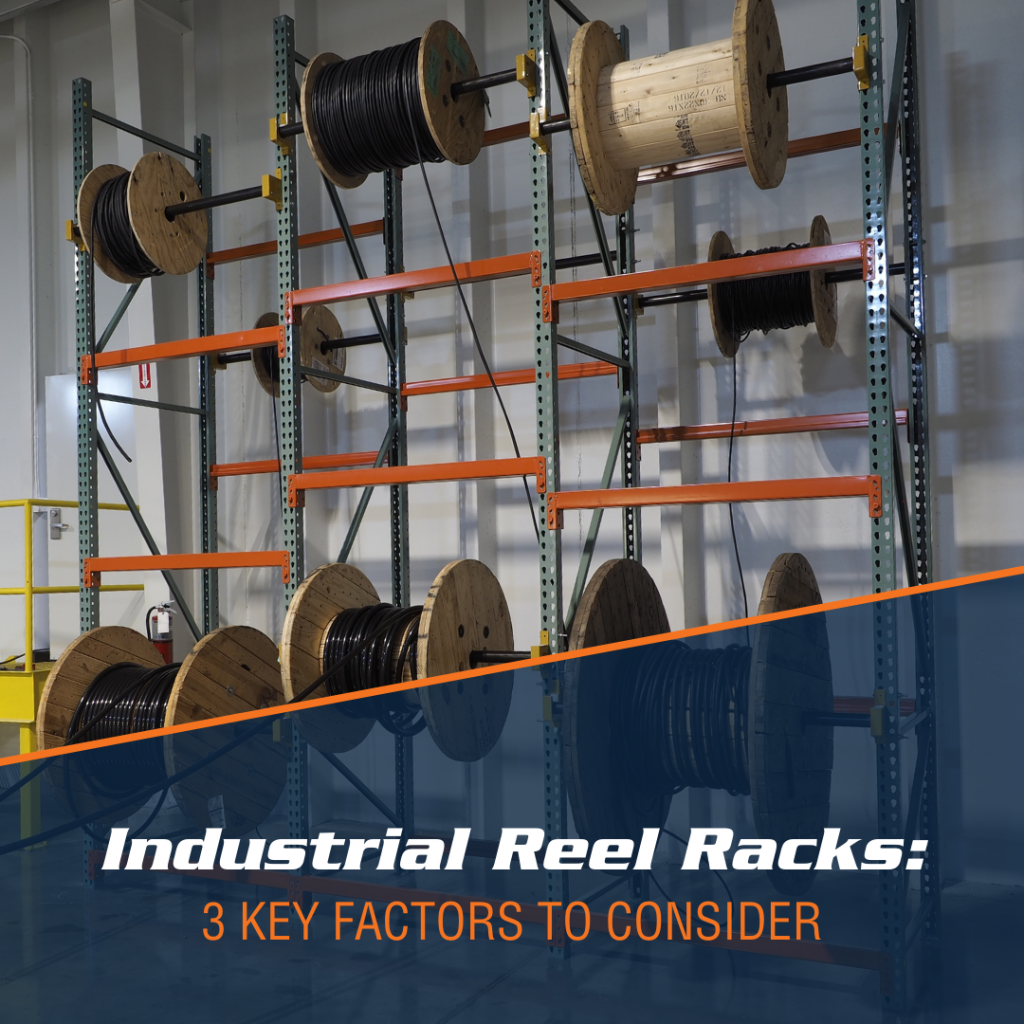We use cookies to make your experience better. To comply with the new e-Privacy directive, we need to ask for your consent to set the cookies. Learn more.
Industrial Reel Racks: 3 Key Factors to Consider
Without proper storage, wire and cable reels can quickly become unmanageable. Industrial reel racks improve organization and maximize floor space, and they’re essential when workers pay out cable or wire from a consistent location. While shelving is a functional option for long-term storage, racking is the best option for reels that are used regularly — and the quality of racking will directly impact your team’s efficiency.

Of course, finding appropriate reel racks can be difficult. Loaded reels can be extremely heavy and have an unusual shape, and standard rack tubes aren’t designed for payout. Many companies invest in custom reel racks, which can be designed to meet the unique needs of the operation.
The downside: custom racking is expensive, and it doesn’t tend to be versatile. As the operation’s needs change, they may find themselves replacing functional reel racks regularly. Moreover, many industrial reel rack systems utilize metal-on-metal axle connections. This limits the lifespan of the moving components, since friction will eventually weaken the rack support system, necessitating replacement.
Finding Reliable Industrial Reel Racks for Smooth Payout
Custom reel racks can address an important need, but they carry significant costs. A more effective solution is to modify existing racks to hold reels with the BHS Axle Holding Kit.
This kit allows for efficient payout, a small storage footprint, and improved versatility — adding the kits creates a storage and payout solution to existing racking, and the components can be outfitted with adapters as needed to accommodate most reels. While the Axle Holding Kit is engineered for durability, it can be easily replaced inexpensively compared to the high cost of new custom racking.
Too many damaged metal axles in your reel racks? Learn more about UHMW-lined Axle Holding Kits here.
When choosing industrial reel racks and components, keep these factors in mind:
-
Capacity - The most obvious consideration is the capacity and physical dimensions of the racking. Ideally, the system will support weights of at least 4,000 pounds per horizontal rack, though some operations may require more support. The racks must also provide sufficient clearance for a fully loaded reel, so buyers may need to perform some quick measurements to make accurate calculations.
The Axle Holding Kit is made with heavy duty, powder-coated steel and can support loads of up to 4,500 pounds. BHS offers a variety of axle tubes with diameters of up to 2 inches, along with adapter kits for larger shafts and hubs.
-
Friction - As discussed above, buyers should avoid industrial reel racks with metal-on-metal components. While these products are inexpensive, they offer a poor return on investment, since the moving components will wear down over time. Look for products that utilize covered contact points. The Axle Holding Kit features a UHMW plastic lining in the bracket. This material reduces friction, minimizing metal-on-metal damage while allowing axles to spin silently.
-
Noise - In real-world use, the silent spin is a noteworthy benefit. Low-noise racks may help employers comply with OSHA standard 1910.95, which limits occupational noise exposure, and quieter workspaces allow personnel to communicate more effectively. Look for racks with low-friction components. The Axle Holding Kit’s in-bracket lining helps to ensure a smooth, quiet spin, providing even payout without excessive noise.
The Axle Holding Kit can convert your existing racking to reel racking, improving floor space and ensuring efficiency. Each kit contains two pieces, and optional adapters add versatility. High-quality industrial reel racks make an enormous difference, and the Axle Holding Kit provides an excellent way to construct safe, long-lasting reel racking at your facility.
